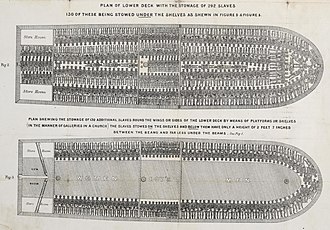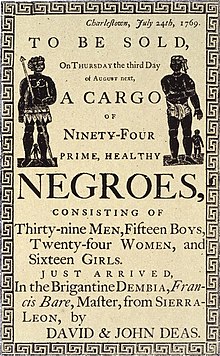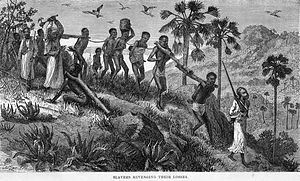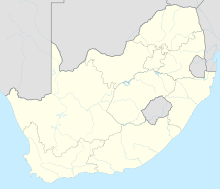Portal:Pan-Africanism/Selected history
Instructions
The layout design for these subpages is at Portal:Pan-Africanism/Selected history/Layout.
- Add a new article to the next available subpage.
- The "blurb" for each article should be approximately 10 lines, for appropriate formatting in the portal main page.
- Update "max=" to new total for its {{Random portal component}} on the main page.
Articles list
Selected history 1
Portal:Pan-Africanism/Selected history/1


The
Following the
During the
From the mid-7th century, the
Selected history 2
Portal:Pan-Africanism/Selected history/2
Africa has the longest record of human habitation in the world. The first hominins emerged 6-7 million years ago, and among the earliest anatomically modern human skulls found so far were discovered at Omo Kibish.
European archaeology, as well as that of
Africa's prehistory has been largely ignored, with the exception of research into early human evolution. However, it is overseen by the PanAfrican Archaeological Association, whose members consist of professional archaeologists from all over Africa.
Selected history 3
Portal:Pan-Africanism/Selected history/3


The
The Portuguese were the first to engage in the Atlantic slave trade in the 16th century. In 1526, they completed the first transatlantic slave voyage to
Selected history 4
Portal:Pan-Africanism/Selected history/4

The . This barter occurred chiefly between the medieval era and the early 20th century. The trade was conducted through slave markets in these areas, with the slaves captured mostly from Africa's interior and Southern Europe.
Selected history 5
Portal:Pan-Africanism/Selected history/5

The
Selected history 6
Portal:Pan-Africanism/Selected history/6

| Independent |
The Scramble for Africa was the occupation, division, and colonization of African territory by European powers during the period of New Imperialism, between 1881 and 1914. It is also called the Partition of Africa and by some the Conquest of Africa. In 1870, only 10 percent of Africa was under formal European control; by 1914 it had increased to almost 90 percent of the continent, with only Ethiopia (Abyssinia) and Liberia still being independent. There were multiple motivations including the quest for national prestige, tensions between pairs of European powers, religious missionary zeal and internal African native politics.
The Berlin Conference of 1884, which regulated European colonisation and trade in Africa, is usually referred to as the ultimate point of the scramble for Africa. Consequent to the political and economic rivalries among the European empires in the last quarter of the 19th century, the partitioning, or splitting up of Africa was how the Europeans avoided warring amongst themselves over Africa. The later years of the 19th century saw the transition from "informal imperialism" by military influence and economic dominance, to direct rule, bringing about colonial imperialism.
Selected history 7
Portal:Pan-Africanism/Selected history/7
| Battle of Isandlwana | |||||||
|---|---|---|---|---|---|---|---|
| Part of the Anglo–Zulu War | |||||||
 A depiction of Lt's Melvill and Coghill fleeing the Battle of Isandlwana with the Queen's Colour, taken from the Illustrated London News. | |||||||
| |||||||
| Belligerents | |||||||
|
| Zulu Kingdom | ||||||
| Commanders and leaders | |||||||
|
Overall commander: |
Overall commander: Ntshingwayo kaMahole Khoza Subordinate commanders: Vumindaba kaNthati Mavumengwana kaNdlela Zibhebhu kaMapitha | ||||||
| Strength | |||||||
|
No.2 Column: British: 14 Native + colonial: c. 511 No.3 Column: British: 734 Native + colonial: c. 578 1,837 men total. In addition to the troops above, an indeterminate number of civilians (wagon drivers, servants, etc.) were also present. |
Zulu Impi: about 20,000 c. 10,000 to 15,000 engaged Reserve: 4,000 to 5,000 to Rorke's Drift | ||||||
| Casualties and losses | |||||||
|
Over 1,300 killed: 52 officers 727 British regulars 471 others including: 133 European Colonial troops 2 artillery pieces captured |
Approx. 1,000–2,500 killed 2,000 wounded. | ||||||
Location of Isandlwana in present-day South Africa | |||||||

The
The battle was a decisive victory for the Zulus and caused the defeat of the first British invasion of Zululand. The British Army had suffered its worst defeat against an indigenous foe with vastly inferior military technology.
Selected history 8
Portal:Pan-Africanism/Selected history/8
Selected history 9
Portal:Pan-Africanism/Selected history/9
The
Its effects on the institution of
Selected history 10
Portal:Pan-Africanism/Selected history/10
Ghana Empire Wagadou | |||||||||
|---|---|---|---|---|---|---|---|---|---|
| c. 700–c. 1240 | |||||||||
African traditional religion, Islam | |||||||||
| Government | Monarchy | ||||||||
| Ghana | |||||||||
• 700 | Kaya Magan Cissé | ||||||||
• 790s | Majan Dyabe Cisse | ||||||||
• 1040–1062 | Ghana Bassi | ||||||||
• 1203–1235 | Soumaba Cisse | ||||||||
| Historical era | Sosso/Submitted to the Mali Empire | c. 1240 | |||||||
| Area | |||||||||
| 1067 est. | 1,600 km2 (620 sq mi) | ||||||||
| |||||||||
| Today part of | |||||||||
The
When Ghana's ruling dynasty began remains uncertain; it is mentioned for the first time in written records by
travelled to the region and gave a detailed description of the kingdom. He claimed that the Ghana could "put 200,000 men into the field, more than 40,000 of them archers", and noted they had cavalry forces as well.As the empire declined it finally became a vassal of the rising Mali Empire at some point in the 13th century. When the Gold Coast in 1957 became the first country in sub-Saharan Africa to regain its independence from colonial rule, it renamed itself in honor of the long-gone empire.
Selected history 11
Portal:Pan-Africanism/Selected history/11
| Part of a series on |
| Traditional African religions |
|---|
 |
After the establishment of Islam, its rapid expansion and
In the Senegambia region, the Serer people who held "a strong connection to their ancient religious past" became the targets of Islamic jihads and persecution from the 11th to the 19th-century resulting in the Battle of Fandane-Thiouthioune.
Traditional African religions are tolerant of other gods, which allows general co-existence for multiple religions. This has been regarded by some authors to be another reason behind the rise of other religions in Africa. Most followers of traditional religions accommodated Islam during the start of its spread in Africa, but in West Africa, it was not until the coming of colonialism that Islam gained mass appeal, transforming even groups with historical animosity towards Islamic domination into Muslim communities.
In many instances, conflicting groups chose to align with Muslim armies against other African communities.
| “ | ...during the nineteenth century, Christian missionaries became active in Africa and Oceania. Attempts by Christian missionaries to convert nonbelievers to Christianity took two main forms: forced conversions and proselytizing. | ” |
| — Garrick Bailey, James Peoples , — Bailey, Garrick; Peoples, James, Essentials of Cultural Anthropology, 3rd ed. Cengage Learning (2013), p. 268, ISBN 9781133603566 [1]
| ||
| “ | The role of Christian missionaries are a private interest group in European colonial occupation of Africa was a significant one...Collectively their activities promoted division within traditional African societies into rival factions...the picture denigrated African culture and religion... | ” |
| — Festus Ugboaja Ohaegbulam , — Ohaegbulam, Festus Ugboaja, Towards an Understanding of the African Experience from Historical and Contemporary Perspectives, University Press of America (1990), p. 161, ISBN 9780819179418 [2]
| ||
| “ | A religion of Middle Eastern origin, Islam reached Africa via the northern region of the continent by means of conquest. The Islamic wars of conquest that would lead to the Islamization of North Africa occurred first in Egypt, when in about 642 CE the country fell to the invading Muslim forces from Arabia. Over the next centuries, the rest of the Maghreb would succumb to Jihadist armies...The notion of religion conversion, whether by force or peaceful means, is foreign to indigenous African beliefs...Islam, however, did not become a religion of the masses by peaceful means. Forced conversion was an indispensable element of proselytization. | ” |
| — Toyin Falola, Adebayo Oyebade , — Falola, Toyin; Oyebade, Adebayo, Hot Spot: Sub-Saharan Africa, ABC-CLIO (2010), p. 7, ISBN 9780313359712 [3]
| ||
| “ | African traditional religion went through and survived this type of persecution at the hands of Christianity and Islam... | ” |
| — Darrol M. Bryant, Rita H. Mataragnon, — Bryant, M. Darrol; Mataragnon, Rita H., (cont. M. Darrol Bryant), The Many faces of religion and society, Paragon House Publishers (1985), p. 100, ISBN 9780913757208
| ||

